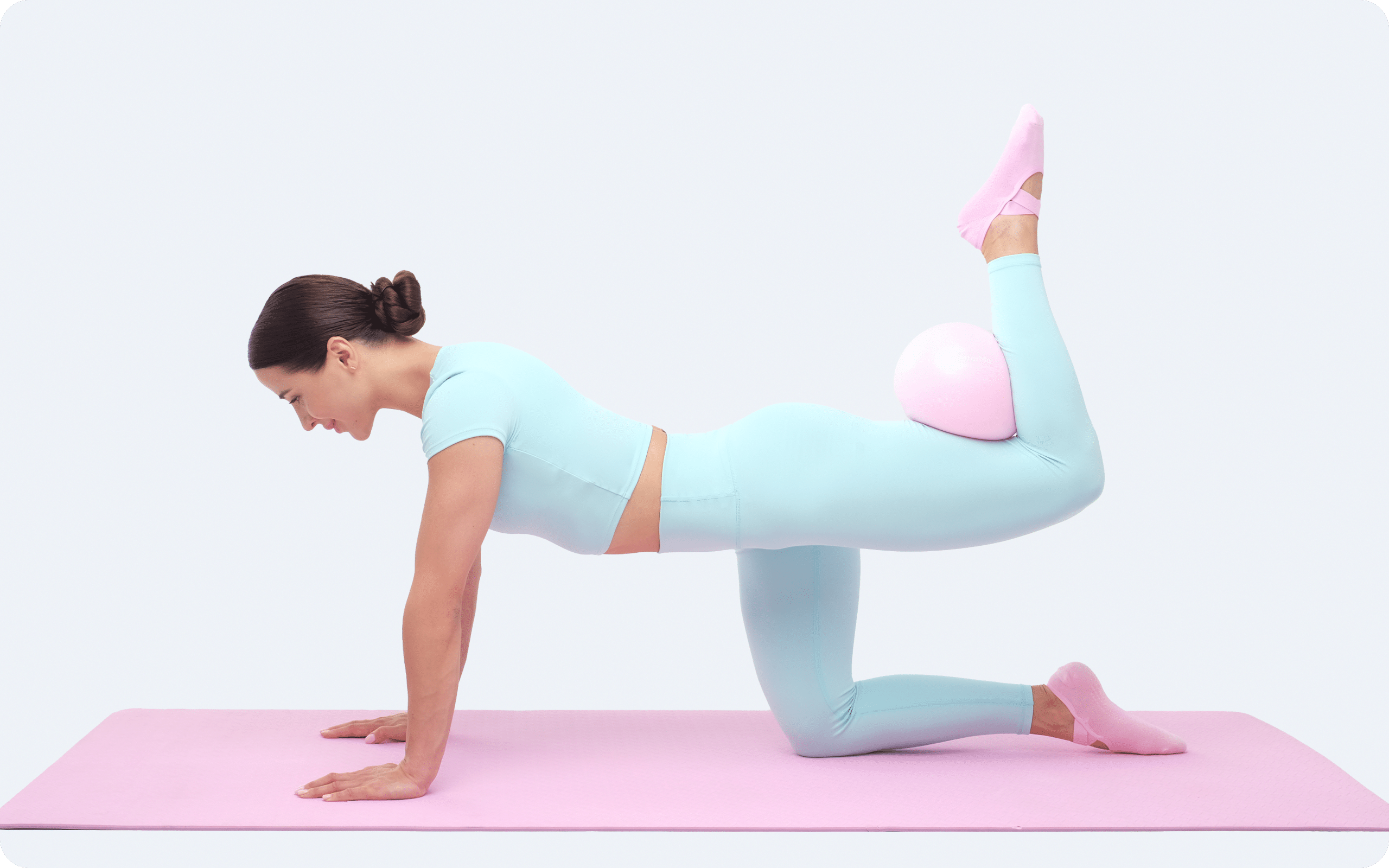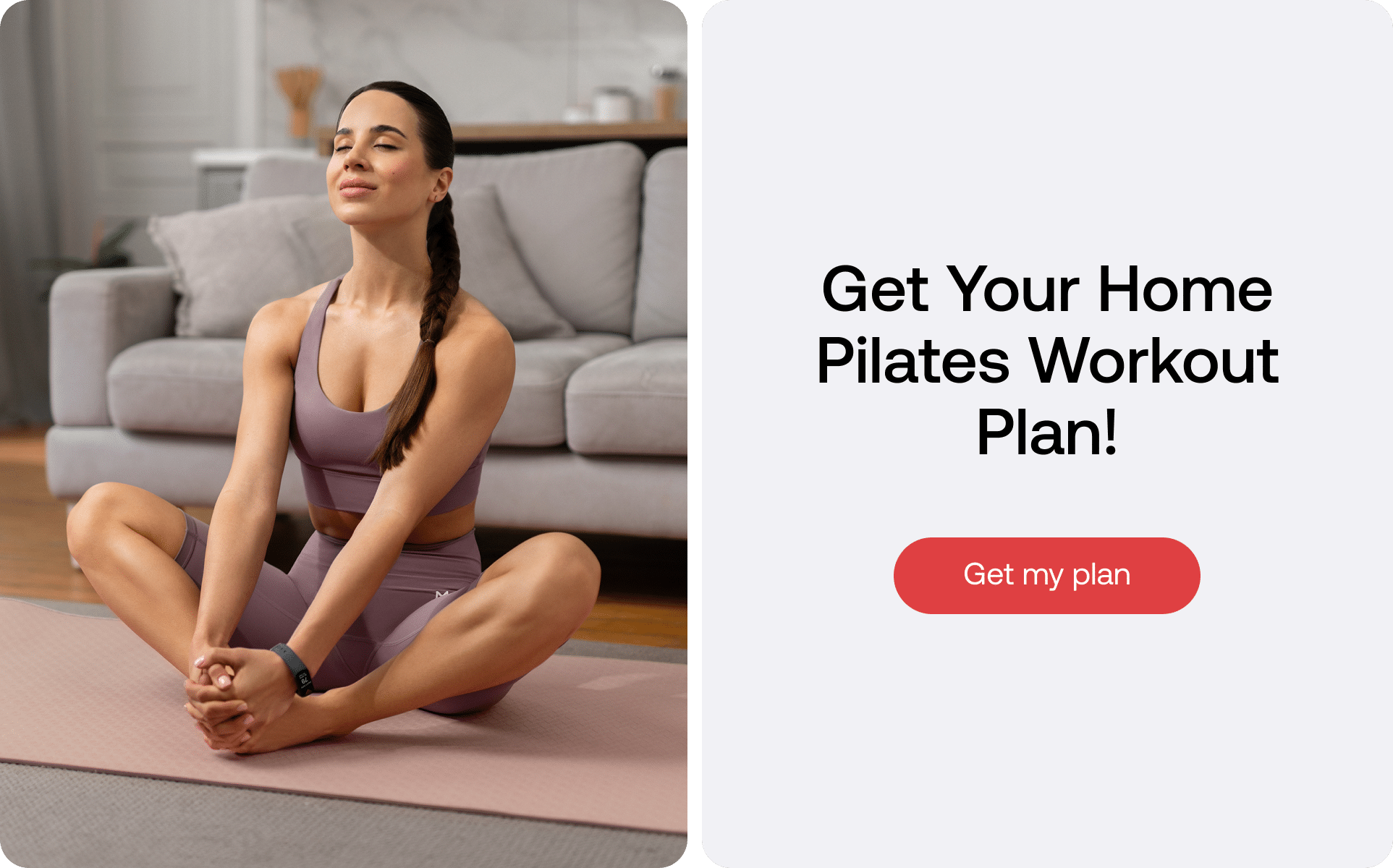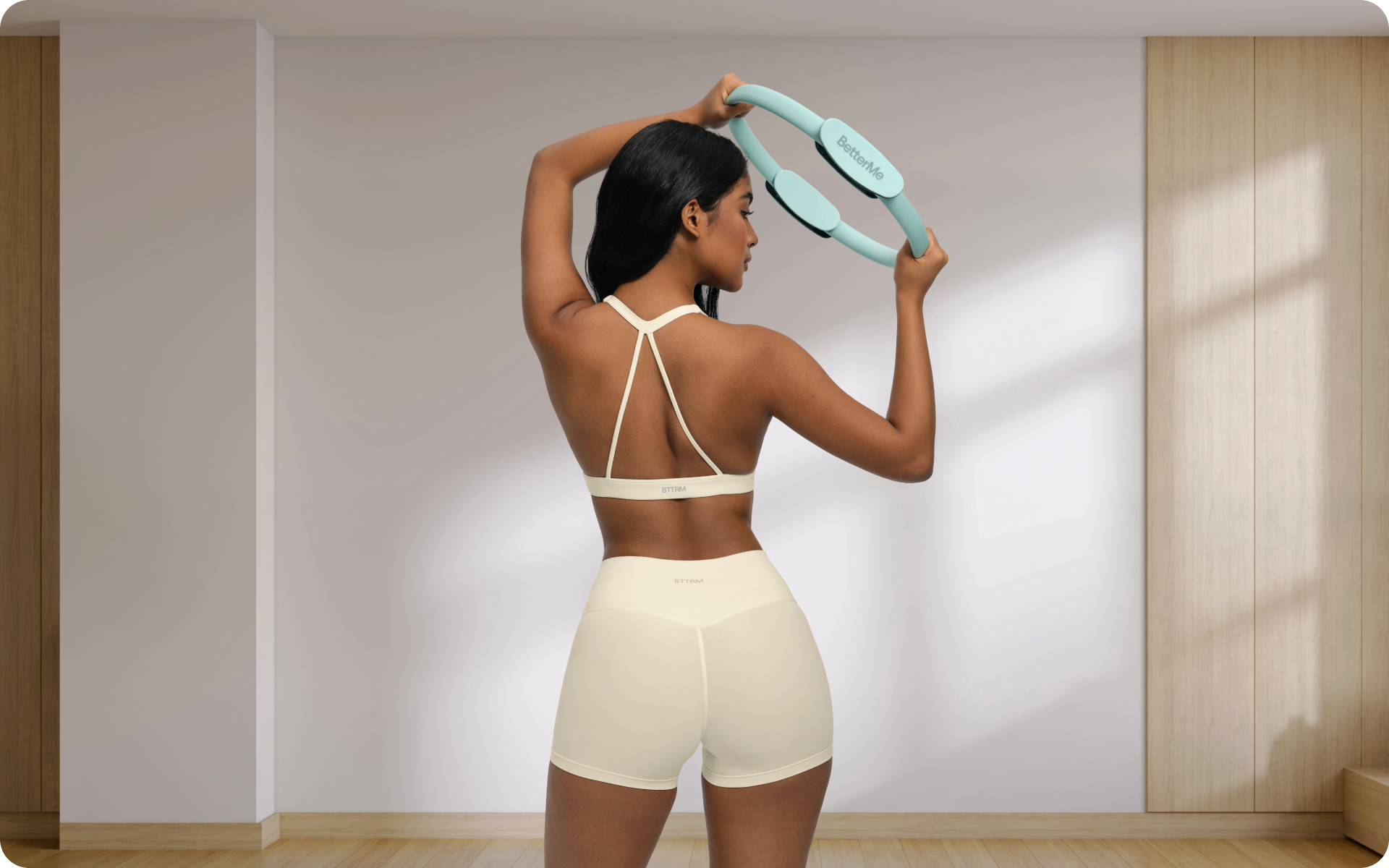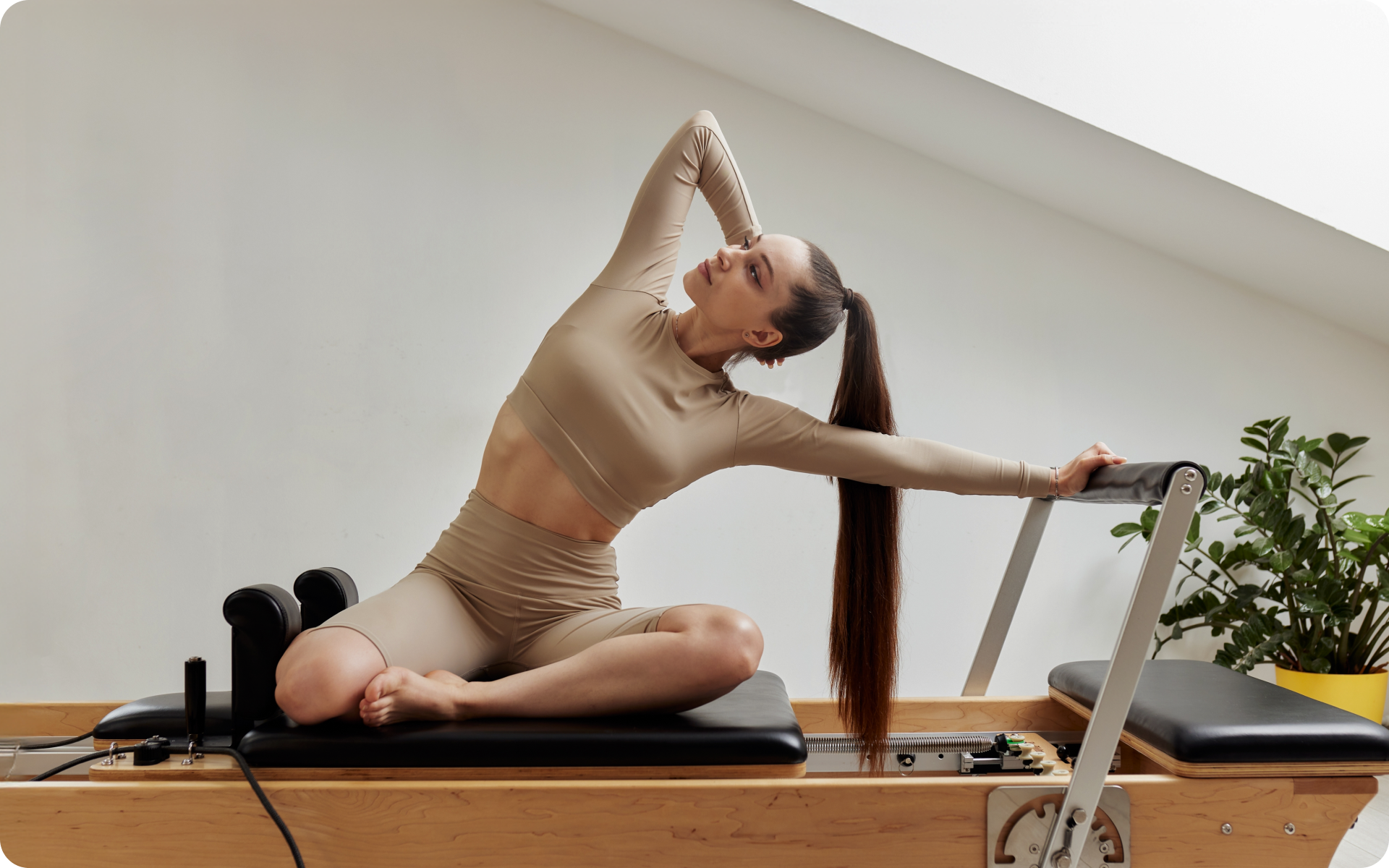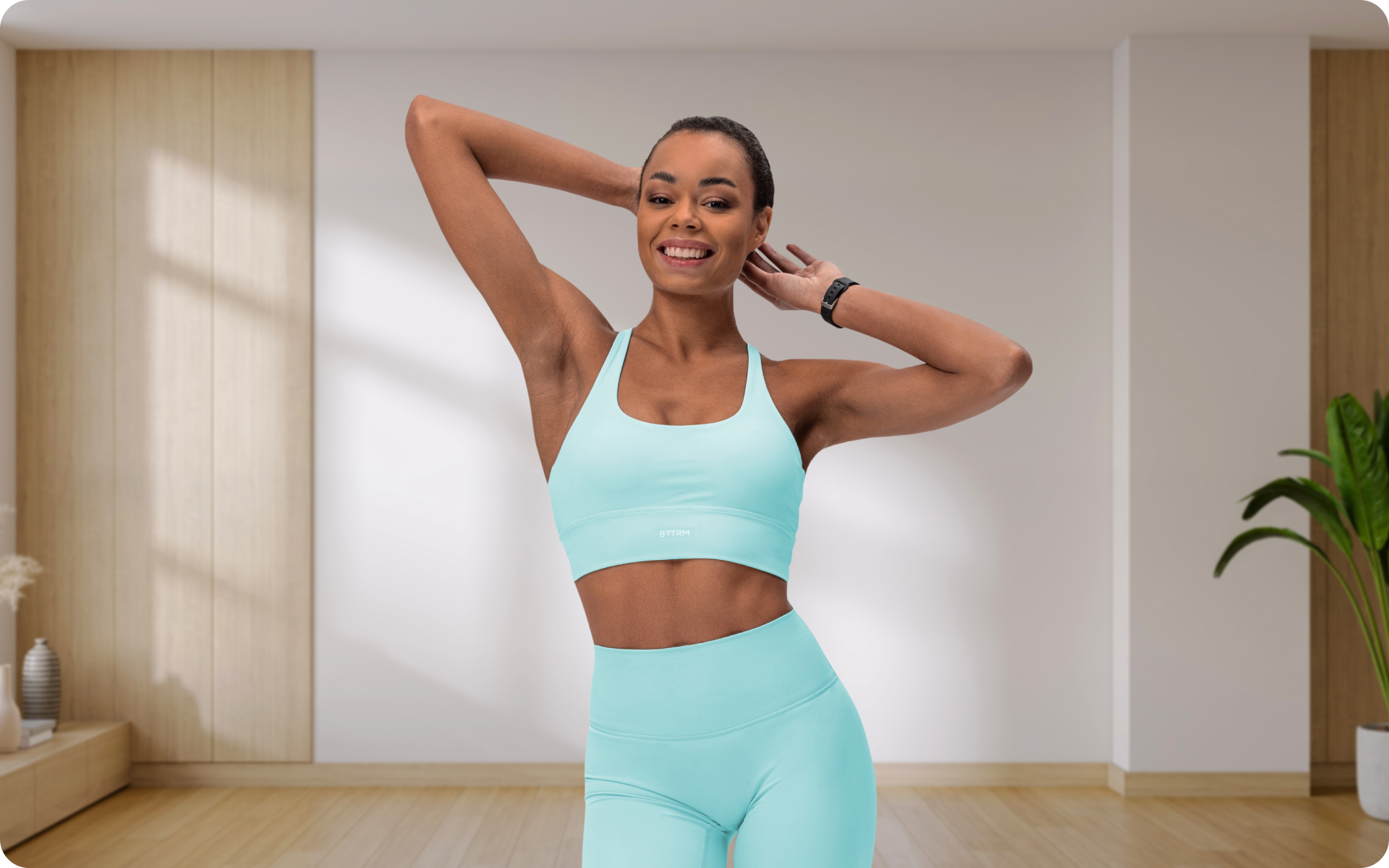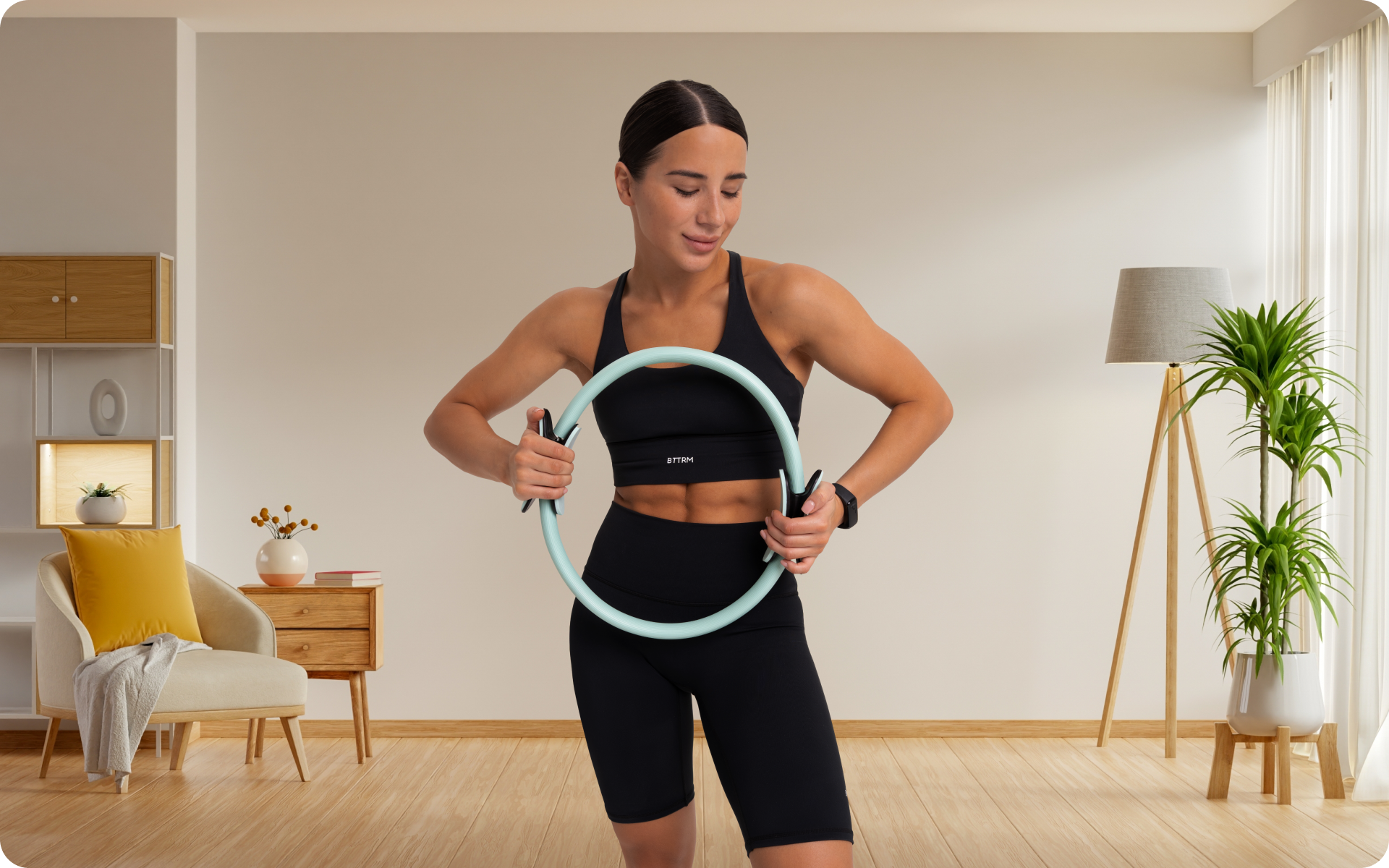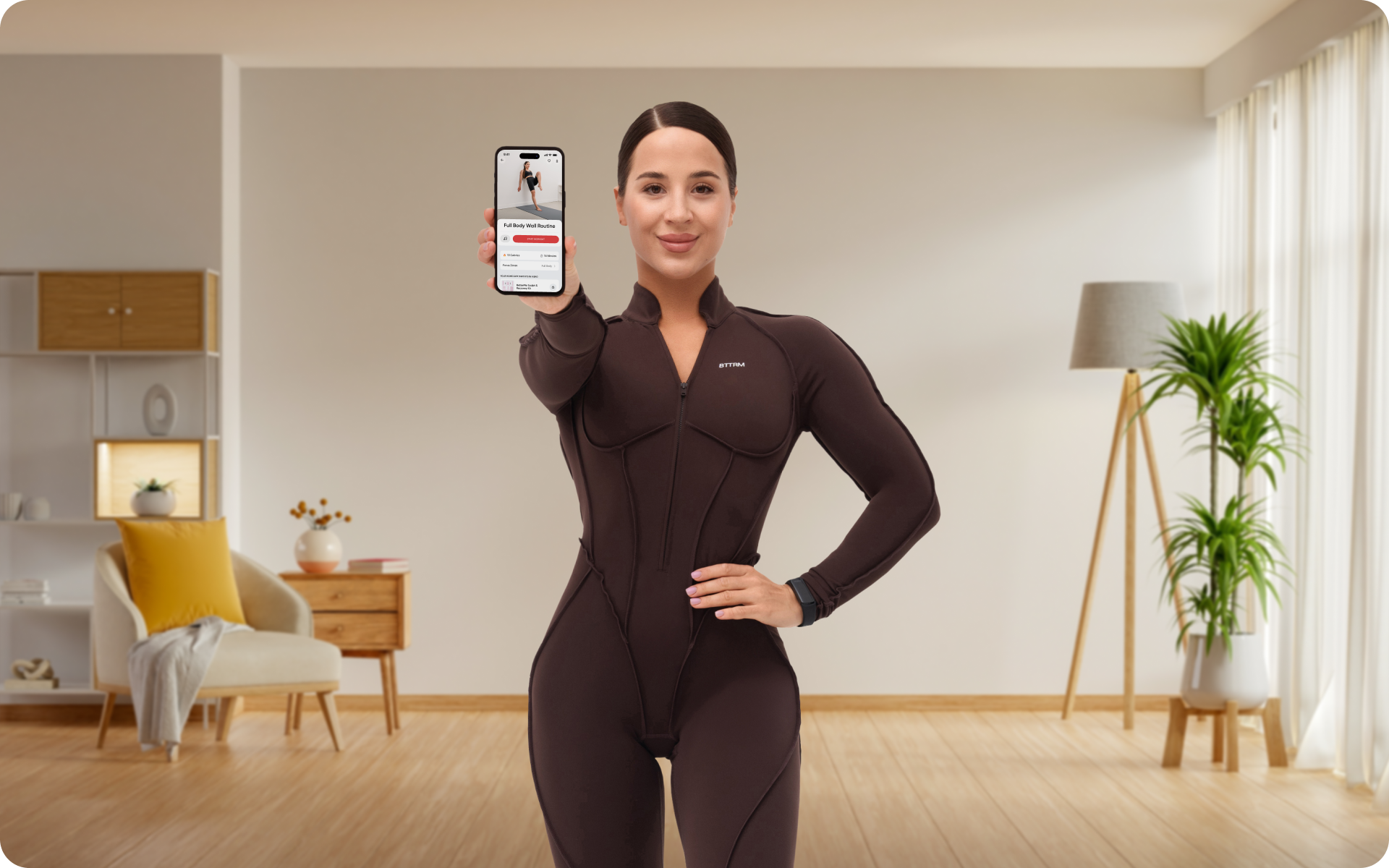Core stabilization is an often overlooked part of many fitness routines. Yet, core muscles play a crucial role in overall strength and body support. Strengthening these muscles results in improved posture, better balance, and reduced back pain (1) (3).
A Pilates ball comes in as an engaging tool to shake up the usual core workout. It activates a variety of muscle groups and requires the mindfulness and precision that can transform a mundane exercise routine into an invigorating session.
We’ve compiled 10 effective Pilates ball exercises for strengthening and sculpting your core, ensuring your workout is as challenging as it is beneficial.
What Is a Pilates Ball?
A Pilates ball, also known as an exercise ball, is an inflatable ball used for strength training, improving balance, and enhancing flexibility. The ball is used in a variety of exercises as part of Pilates, yoga, and general fitness routines.
The purpose of the Pilates ball is to challenge the body by creating instability, which forces different muscles to engage to maintain balance. This can help to improve core strength, posture, and muscle tone (5).
Pilates balls come in different sizes. For example, Pilates Soft Ball exercises typically use a smaller ball (around 9 inches in diameter).
If you tend to let yourself off the hook, raise the white flag when things get tougher than you expected, send yourself on an unconscious binge-eating trip – BetterMe app is here to help you leave all of these sabotaging habits in the past!
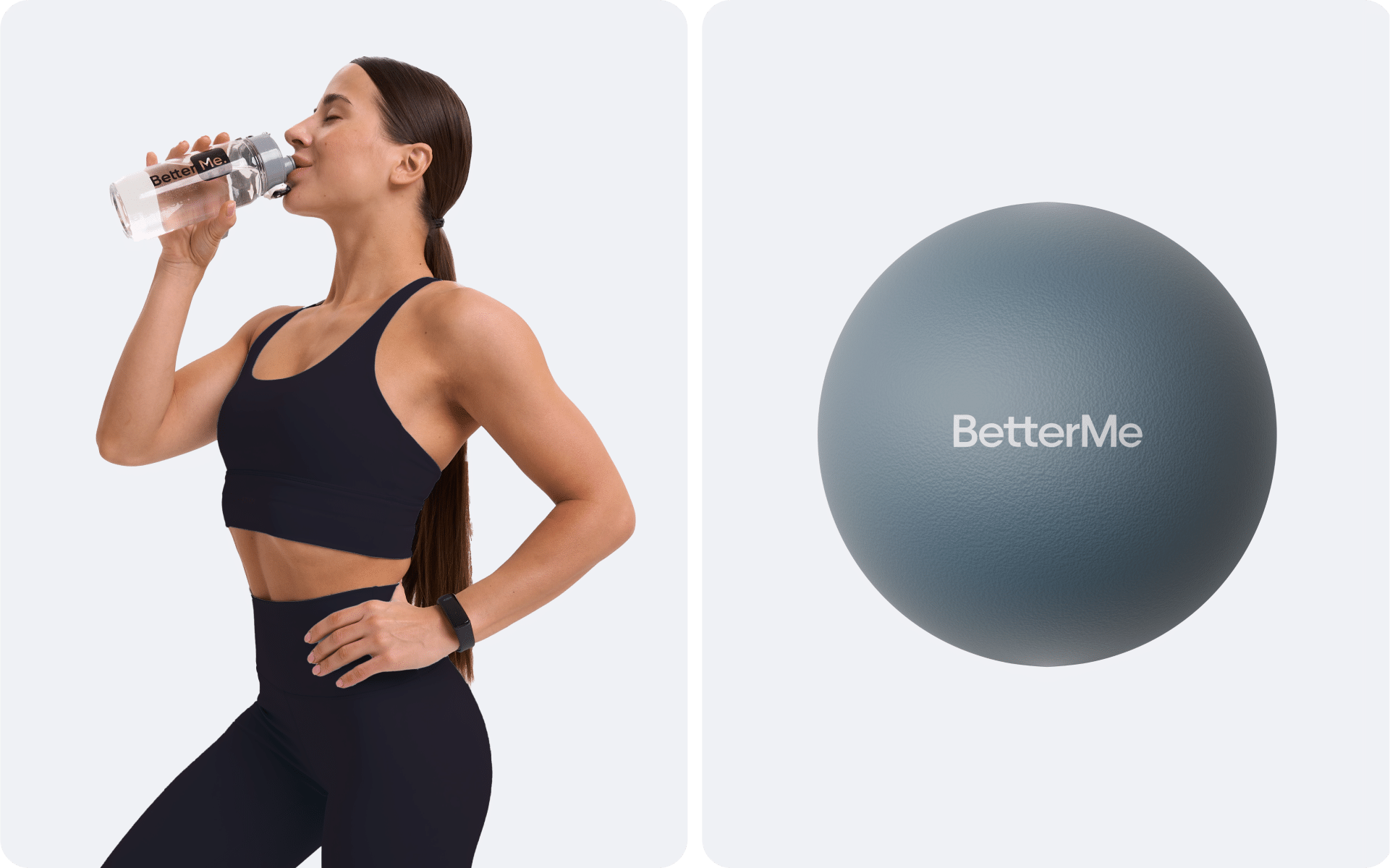
10 Pilates Ball Exercises for a Core Workout
This core workout involves engaging your abdominal muscles to stabilize your body while performing the exercises. Focus on maintaining proper form and control throughout each movement for maximum benefit.
Pilates Roll-Up
- Lie flat on your back, legs extended, and arms overhead holding the Pilates ball.
- Inhale, bringing your arms to the ceiling. Exhale and slowly roll up into a seated position, reaching for your toes with the ball.
- Inhale to start rolling down, and exhale to lower your spine one vertebrae at a time, keeping the ball above as you return to the starting position.
Leg Circles
- Lie on your back with the Pilates ball placed between your ankles.
- Extend your legs towards the ceiling with a slight bend in the knee.
- Circle your legs outward for five repetitions, then reverse the direction for another five, keeping your core engaged.
Glute Bridge
- Lie on your back, knees bent, feet flat on the floor, and place the Pilates ball between your knees.
- Press your hips toward the ceiling, squeezing the ball to engage your inner thighs.
- Hold the top position for a moment, then slowly lower your hips back to the floor.
Pilates Teaser with Ball
- Lie on your back with the Pilates ball between your ankles.
- Extend your arms overhead, and slowly roll up to a seated position while lifting the ball towards the ceiling.
- Slowly lower back down, keeping the ball steady between your ankles.
Pilates Hundreds
- Lie on your back and hold the Pilates ball between your palms.
- Lift your legs off the ground and extend them to a tabletop position.
- Curl your head, neck, and shoulders off the floor, engaging your core.
- Begin pumping your arms up and down as you inhale for five counts and exhale for five counts.
Crescent Moons
- Begin by kneeling and holding the ball with both hands above your head.
- Lean to one side creating a “C” shape with your body, and hold for a few seconds.
- Return to the center and repeat on the opposite side, utilizing your obliques to move the ball.
Toe Taps
- Lie on your back with knees bent at a 90-degree angle, feet lifted, and the Pilates ball placed between your calves and hamstrings.
- Extend one foot up towards the ceiling, then return back to the start position.
- Alternate between feet, maintaining a steady pace and keeping your core tight.
Read more: Wall Pilates for Butt: A Quick Guide for Beginners
What Is a Pilates Ball Good For?
A Pilates ball is an excellent tool for improving core strength and stability. Here are the use-specific benefits of incorporating a Pilates ball in your core workout (4):
Core Muscle Development
One of the benefits of a Pilates ball is to strengthen the core muscles (2).
When you perform exercises with the unstable surface of an exercise ball, you’re forced to engage your core muscles to maintain balance. This engagement helps to build the muscle fibers in the abs, obliques, and lower back, contributing to a stronger core and a more sculpted midsection.
Versatility in Exercise
Pilates balls are incredibly versatile and can be used for a variety of exercises beyond core workouts. They can support your back during sit-ups, increase the intensity of push-ups, or act as props in yoga poses.
Their versatility makes them an excellent investment for anyone looking to diversify their workout routine.
Rehabilitation and Recovery
Pilates balls are frequently used in physical therapy and rehabilitation settings.
The gentle resistance and support provided by the ball can help those recovering from injury to slowly rebuild strength and mobility without placing undue stress on their bodies. It’s a valuable tool for guided exercises that promote healing and restoration.
What Are Pilates Soft Balls Used For?
Pilates soft balls are smaller than traditional Pilates balls and have a softer, squishier texture. They are typically used for rehabilitation exercises that require gentle support and resistance or as a prop in certain yoga poses.
Soft balls can also be used to:
- Add extra resistance and challenge muscles during traditional Pilates exercises
- Improve balance and stability in standing or kneeling positions
- Provide cushioning for the body, particularly in exercises that require lying on the floor
- Enhance coordination and motor skills through guided movements
BetterMe app is a foolproof way to go from zero to a weight loss hero in a safe and sustainable way! What are you waiting for? Start transforming your body now!
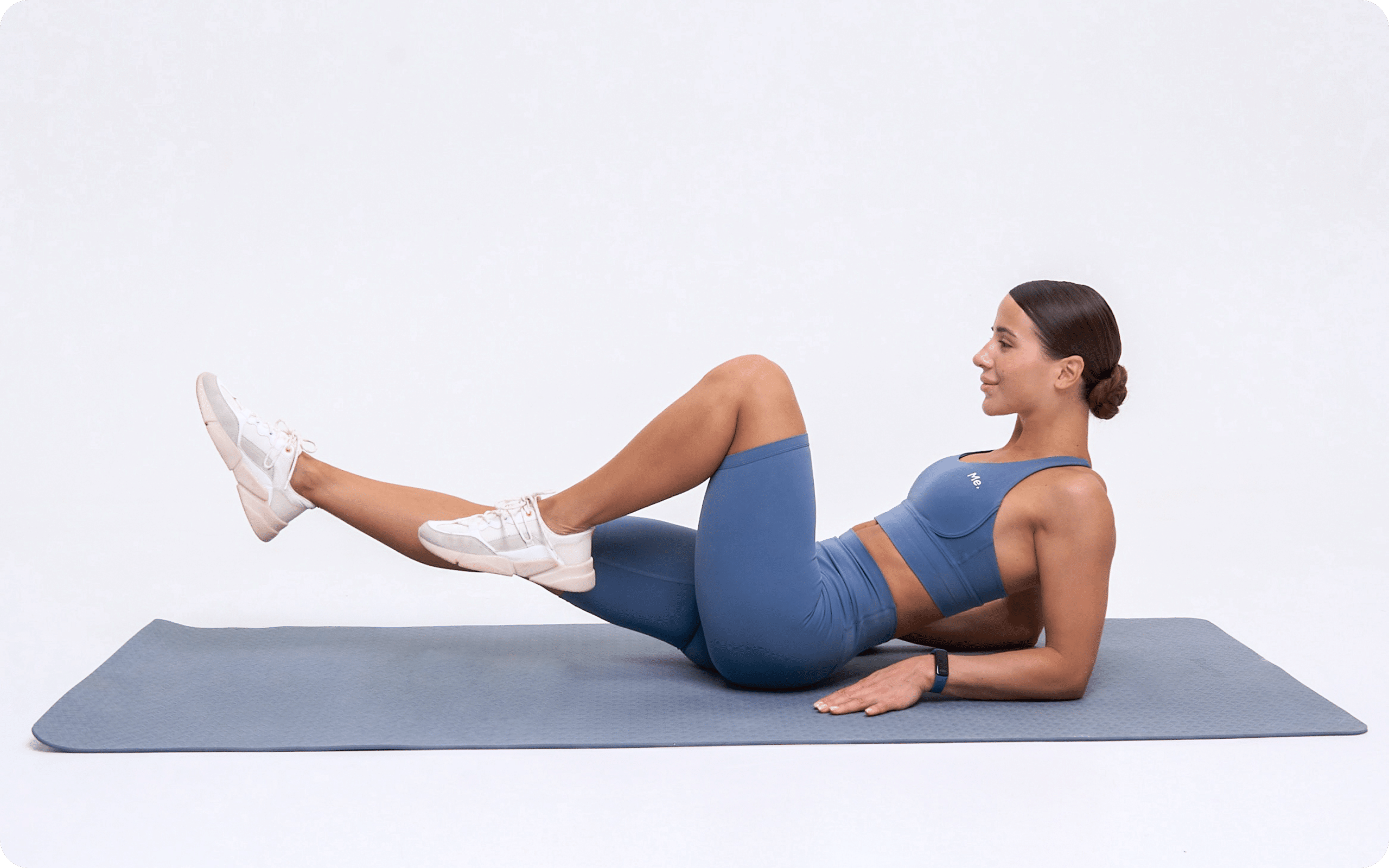
What Do You Do With a Small Pilates Ball?
A small Pilates ball can be used in various ways to enhance your workout routine. Here are some small Pilates ball exercises you can do:
Deep Core Over Ball
This exercise engages the deep core muscles and can help improve posture.
- Lie on your back with the ball between your legs and knees bent at a 90-degree angle.
- Extend arms overhead, inhale, then exhale as you engage your core and lift your head, neck, and shoulders off the floor.
- Hold for a few seconds, then lower back down.
Bridging With a Ball Under Foot
In this exercise, you lie on your back, place the ball under your feet, and lift your hips off the ground, which works your glutes, hamstrings, and core muscles.
Curl Up With Inner Thigh Squeeze
- You lay on your back with your knees bent up in the air in line with your hips, hands behind your head, and the ball between your knees.
- As you curl up, you squeeze the ball with your thighs. This not only works your abs but also your inner thighs.
Tabletop Pulses
- In this exercise, you sit on the ground with your knees bent and feet flat on the floor.
- Hold the ball with both hands and extend your arms out in front of you.
- Lean back slightly, engaging your core, and lift your feet off the ground into a tabletop position. Then, pulse the ball up and down in small movements.
Who Should Not Use an Exercise Ball?
People with certain medical conditions or injuries should consult with a healthcare professional before incorporating an exercise ball into their workout routine.
- If you have a history of back pain or spinal issues, it’s crucial to consult with your doctor before using an exercise ball as improper use could exacerbate existing problems.
- Pregnant women should also consult with their doctor before using an exercise ball, as some exercises may not be suitable during pregnancy.
- People with balance or coordination issues may need to start with simpler exercises and gradually progress to more advanced ones on the ball.
Always listen to your body and modify any exercises that cause discomfort or pain. Work with a certified Pilates instructor or physical therapist to ensure proper form and technique, particularly if you’re new to using an exercise ball.
Thai Pilates Full Body Workout blog has more tips on ensuring you get the most out of your exercises.

How Hard Should a Pilates Ball Be?
A Pilates ball should be firm enough to provide support and resistance but soft enough to allow for some squish or compression.
If the ball is too hard, it may feel uncomfortable or unstable, making it challenging to maintain good form and perform exercises correctly. On the other hand, if the ball is too soft, it may not offer enough support or resistance to challenge your muscles effectively.
Read more: Pilates Full Body Workout for Beginners (No Equipment Needed)
FAQs
What Is The Small Pilates Ball Called?
The small Pilates ball is also known as a mini stability ball, soft ball, or Pilates soft ball.
Our Wall Pilates Equipment guide has more information on other equipment like Pilates balls and their uses.
How Do You Use a Small Core Ball?
A small core ball, like a Pilates soft ball, can be used by placing it between your legs or feet during exercises, squeezing it with your thighs in seated positions, using it as a prop for balance or support, and more.
Are Exercise Balls Safe?
Exercise balls are generally safe to use, but it’s essential to use proper form and follow any instructions or modifications recommended by a certified instructor. Also, be sure to check the ball regularly for any signs of damage or wear and replace it as needed.
Does An Exercise Ball Help Lose Belly Fat?
An exercise ball can’t target specific areas of fat loss, but incorporating it into a well-rounded exercise routine that includes cardio and strength training can help promote overall weight loss and toning, including in the abdominal area.
The Bottom Line
Pilates Ball Exercises are great for core and balance training. It’s best to start with simpler exercises if you’re new to using an exercise ball, and slowly progress as your strength and coordination improve.
DISCLAIMER:
This article is intended for general informational purposes only and does not serve to address individual circumstances. It is not a substitute for professional advice or help and should not be relied on for making any kind of decision-making. Any action taken as a direct or indirect result of the information in this article is entirely at your own risk and is your sole responsibility.
BetterMe, its content staff, and its medical advisors accept no responsibility for inaccuracies, errors, misstatements, inconsistencies, or omissions and specifically disclaim any liability, loss or risk, personal, professional or otherwise, which may be incurred as a consequence, directly or indirectly, of the use and/or application of any content.
You should always seek the advice of your physician or other qualified health provider with any questions you may have regarding a medical condition or your specific situation. Never disregard professional medical advice or delay seeking it because of BetterMe content. If you suspect or think you may have a medical emergency, call your doctor.
SOURCES
- Core Stability Exercise Principles : Current Sports Medicine Reports (2008, journals.lww.com)
- Core stability exercises on and off a Swiss ball (2005, pubmed.ncbi.nlm.nih.gov)
- Effects of core stabilization exercise and strengthening exercise on proprioception, balance, muscle thickness and pain related outcomes in patients with subacute nonspecific low back pain: a randomized controlled trial (2021, ncbi.nlm.nih.gov)
- Exercise Ball Uses (2010, spine-health.com)
- Pilates Ball: This Simple Piece of Equipment Changed My Workouts (2022, today.com)
- The effect of ball exercise on the balance ability of young adults (2017, ncbi.nlm.nih.gov)
- The gym ball as a chair for the back pain patient: A two case report (2007, ncbi.nlm.nih.gov)

